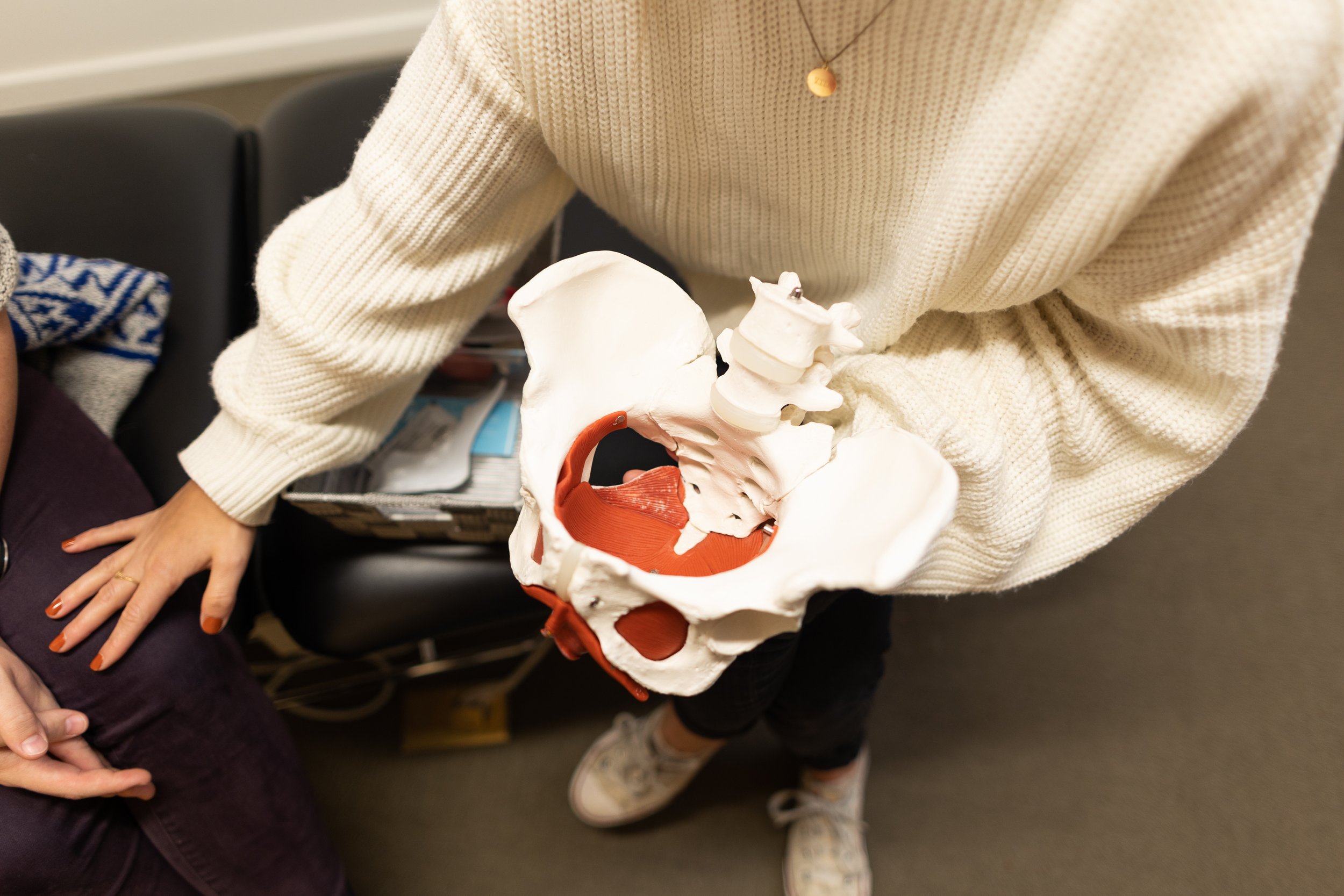Pelvic Pain: Can Physiotherapy Help?
Pelvic pain is a common presentation, and affects around 15-20% of people at any given time. What is it exactly? Pelvic pain is described as an unpleasant symptom around your abdomen, tailbone, or at the base of your genitals.
There are lots of different causes for these symptoms, and not all conditions present the same. For some, pelvic pain is a brief episode; for others, it is reoccurring or chronic. The good news however is that almost all forms of pelvic pain are treatable.
Some examples of pelvic pain conditions include:
Painful periods (Dysmenorrhea)
Pain with urinating or with bowel movements
Endometriosis
Bladder Pain Syndrome / Interstitial Cystitis
Chronic Prostatitis
Vulvar pain (Vulvodynia or Vestibulodynia)
Pain with intercourse (Dyspareunia)
Tailbone pain (Coccydynia)
A bit more about pain:
Pelvic Pain signals can start from different organs or tissues in your pelvis, such as your bladder, uterus, prostate, or genitals. This signal can become amplified by your nervous system, especially when felt repeatedly with daily activities, like using the bathroom. When this signal is repeated, your nervous system triggers the pelvic floor muscles to tighten, and this can aggravate your symptoms.
Pelvic pain can be emotionally distressing and impact our quality of life and relationships. You may experience symptoms of depression, poor sleep, and increases in sedentary behaviour. Pelvic health physiotherapy can address these issues and help you reengage with your everyday life.
I have pelvic pain. How can physiotherapy help?
Pelvic floor physiotherapy can work wonders for those with pelvic pain. Our pelvic health physiotherapists will create a bespoke treatment plan that addresses your physical, emotional, and mental health.
Our pelvic health physiotherapists will work with you to create an individualized therapy program that includes:
Relaxation techniques for your pelvic floor
Breathing exercises and yin yoga poses to help calm your nervous system and stretch the muscles around your pelvis
Strategies to help reduce pain in your activities of daily living, like when using the toilet or during intercourse
Manual therapy to help reduce tension and sensitivity throughout your body
Mindfulness and meditation practices
Know that pelvic pain is not something you have to live with. Pelvic health physiotherapy is a great first step to learning more about why you have pain and exploring strategies to help you live your life without the white noise of pain.
Our team at Tall Tree is multidisciplinary and resourceful. We can connect you with other therapies that can be an important part of your recovery, such as counselling, naturopathic medicine, kinesiology, and massage therapy, all under one roof. Your care will be integrated and fluid. With the right approach, we know it is possible to reduce pelvic pain and get you back to the things you love doing.






















